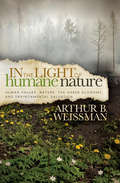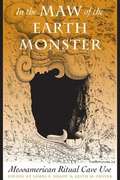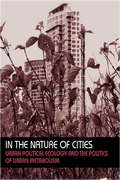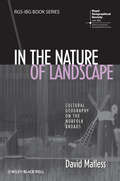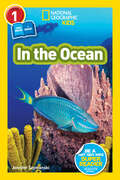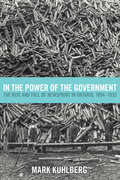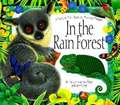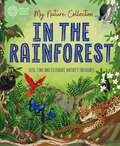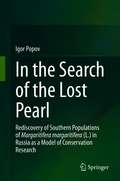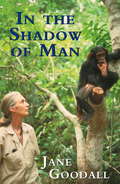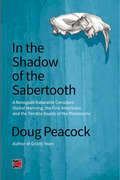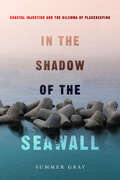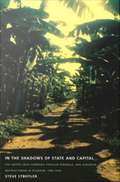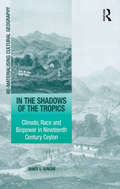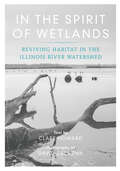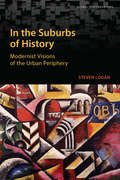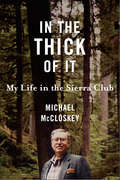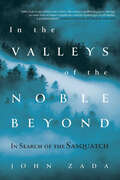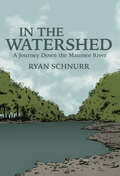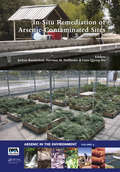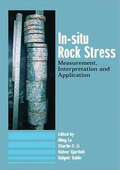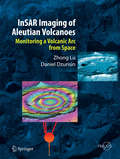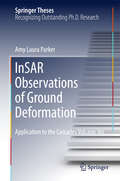- Table View
- List View
In the Light of Humane Nature: Human Values, Nature, the Green Economy, and Environmental Salvation
by Arthur B. WeissmanThis engaging book encourages us to tap into humanity&’s highest ideals to solve environmental and social problems and become better people in the process. Despite significant progress in recent decades, the environmental crisis is far from over. We know what needs to change, but we don&’t seem to know—economically, politically, or socially—how to stop the juggernaut of destructive development and resource depletion. Something continues to undermine our efforts to become a truly sustainable society. This book highlights the positive accomplishments we have made recently in greening the economy, but also exposes the underlying causes of our continued march toward disaster. A seasoned environmental professional, Arthur Weissman argues that what causes our environmental problems and stymies solutions ultimately relates to human values and our attitudes toward the world around us, including other humans, other species, and nature as a whole. We will attain our true relationship with nature only when we embrace the highest human values. In the Light of Humane Nature weaves personal narrative and autobiographical details with professional and philosophical discourse. Weissman sticks to essential concepts we can all comprehend, and presents the changes we need to make in our moral and aesthetic outlooks to connect with our highest human values so that we may achieve a sustainable and humane world.
In the Maw of the Earth Monster: Mesoamerican Ritual Cave Use
by James E. Brady Keith M. PruferAs portals to the supernatural realm that creates and animates the universe, caves have always been held sacred by the peoples of Mesoamerica.<P><P> From ancient times to the present, Mesoamericans have made pilgrimages to caves for ceremonies ranging from rituals of passage to petitions for rain and a plentiful harvest. So important were caves to the pre-Hispanic peoples that they are mentioned in Maya hieroglyphic writing and portrayed in the Central Mexican and Oaxacan pictorial codices. Many ancient settlements were located in proximity to caves. This volume gathers papers from twenty prominent Mesoamerican archaeologists, linguists, and ethnographers to present a state-of-the-art survey of ritual cave use in Mesoamerica from Pre-Columbian times to the present. Organized geographically, the book examines cave use in Central Mexico, Oaxaca, and the Maya region. Some reports present detailed site studies, while others offer new theoretical understandings of cave rituals. As a whole, the collection validates cave study as the cutting edge of scientific investigation of indigenous ritual and belief. It confirms that the indigenous religious system of Mesoamerica was and still is much more terrestrially focused that has been generally appreciated.
In the Nature of Cities: Urban Political Ecology and the Politics of Urban Metabolism (Questioning Cities)
by Nik Heynen Maria Kaika Eric SwyngedouwThe social and material production of urban nature has recently emerged as an important area in urban studies, human/environmental interactions and social studies. This has been prompted by the recognition that the material conditions that comprise urban environments are not independent from social, political, and economic processes, or from the cultural construction of what constitutes the ‘urban’ or the ‘natural’. Through both theoretical and empirical analysis, this groundbreaking collection offers an integrated and relational approach to untangling the interconnected processes involved in forming urban landscapes. The essays in this book attest that the re-entry of the ecological agenda into urban theory is vital both in terms of understanding contemporary urbanization processes, and of engaging in a meaningful environmental politics. They debate the central themes of whose nature is, or becomes, urbanized, and the uneven power relations through which this socio-metabolic transformation takes place. Including urban case studies, international research and contributions from prominent urban scholars, this volume will enable students, scholars and researchers of geographical, environmental and urban studies to better understand how interrelated, everyday economic, political and cultural processes form and transform urban environments.
In the Nature of Landscape: Cultural Geography on the Norfolk Broads (RGS-IBG Book Series)
by David MatlessIn the Nature of Landscape presents regional cultural landscape as a new direction for research in cultural geography. Represents the first cultural geographic study of the Norfolk Broads region of eastern England Addresses regional cultural landscape through consideration of narratives of landscape origin, debates over human conduct, the animal and plant landscapes of the region, and visions of the ends of landscape through pollution and flood Draws upon in-depth original research, spanning almost two decades of archival work, interviews, and field study Covers a great diversity of topics, from popular culture to scientific research, folk song to holiday diaries, planning survey to pioneering photography, and ornithology to children’s literature Features a variety of illustrative material, including original photographs, paintings, photography, advertising imagery, scientific diagrams, maps, and souvenirs
In the Ocean (Readers)
by Jennifer SzymanskiDive into the waves and under the sea to meet the unique, amazing, and totally weird creatures that call the ocean home!Whales, dolphins, sea turtles, and fish galore--you'll encounter all these incredible creatures and more in this early reader, designed for parents and children to read together. National Geographic Kids Readers have been a hit in the competitive beginning reader category, and this book builds upon that success with a new approach--parents and children reading together. With the same combination of careful text, brilliant photographs, and fun approach to high-interest subjects that has proved to be a winning formula with kids, National Geographic Co-Readers provide one page of adult-read-aloud and one page of kid-read-aloud text on each spread, building toward a collaborative reading experience. Inside you'll find expert-vetted text, stunning images, and activities that help kids understand the concepts and vocabulary words in each book.
In the Power of the Government
by Mark KuhlbergFor forty years, historians have argued that early twentieth-century provincial governments in Canada were easily manipulated by the industrialists who developed Canada's natural resources, such as pulpwood, water power, and minerals. With In the Power of the Government, Mark Kuhlberg uses the case of the Ontario pulp and paper industry to challenge that interpretation of Canadian provincial politics.Examining the relationship between the corporations which ran the province's pulp and paper mills and the politicians at Queen's Park, Kuhlberg concludes that the Ontario government frequently rebuffed the demands of the industrialists who wanted to tap Ontario's spruce timber and hydro-electric potential. A sophisticated empirical challenge to the orthodox literature on this issue, In the Power of the Government will be essential reading for historians and political scientists interested in the history of Canadian industrial development.
In the Rain Forest: A Touch-and-Feel Adventure
by Maurice PledgerWith many different textures and sights, visit the rainforest. Chameleons, hummingbirds, parrots, frogs and more spread over the pages to take you deep in the rainforest. These books feature interactive touch and feel pages and precious stories that will stimulate children's curiosity and make learning about the natural world an entertaining experience. Endearing animal characters and beautifully illustrated, nature-inspired settings encourage youngsters to ask for these books time and time again.
In the Rainforest (Let's-Read-and-Find-Out Science 2)
by Kate DukeRead and find out about rainforests in this colorfully illustrated nonfiction picture book.The rainforest is home to millions of plant and animal species. Some animals live high up in the trees, some crawl across the forest floor, and some tunnel underground, but they all depend on one another and the rain to survive. With colorful illustrations and fascinating diagrams from author-illustrator Kate Duke, In the Rainforest is a lively look at the most vibrant ecosystem on our planet. This is a clear and appealing science book for early elementary age kids, both at home and in the classroom. It's a Level 2 Let's-Read-and-Find-Out, which means the book explores more challenging concepts for children in the primary grades. The 100+ titles in this leading nonfiction series are:hands-on and visualacclaimed and trustedgreat for classroomsTop 10 reasons to love LRFOs:Entertain and educate at the same timeHave appealing, child-centered topicsDevelopmentally appropriate for emerging readersFocused; answering questions instead of using survey approachEmploy engaging picture book quality illustrationsUse simple charts and graphics to improve visual literacy skillsFeature hands-on activities to engage young scientistsMeet national science education standardsWritten/illustrated by award-winning authors/illustrators & vetted by an expert in the fieldOver 130 titles in print, meeting a wide range of kids' scientific interestsBooks in this series support the Common Core Learning Standards, Next Generation Science Standards, and the Science, Technology, Engineering, and Math (STEM) standards. Let's-Read-and-Find-Out is the winner of the American Association for the Advancement of Science/Subaru Science Books & Films Prize for Outstanding Science Series.
In the Rainforest: Seek, find and celebrate nature's treasures with the Natural History Museum (My Nature Collection)
by Cameron MenziesA stunning and interactive exploration of the natural world, celebrating the diversity of natural treasures in the rainforest and published in partnership with the Natural History Museum in London.My Nature Collection: In the Rainforest is filled with beautifully detailed artwork, highlighted natural treasures and hidden features to spot on every page. Deep-dive into many remarkable rainforest habitats and get to know their special features, from toucans in the canopy to fungi on the forest floor, from bongos in the Congo Basin to moon flowers blooming at night. Search and find each wonder in context, with answers and further explanations at the back of the book.My Nature Collection book series encourages readers age 7 and up to look carefully and consider Earth's natural habitats in detail through interactive questions and up-close artwork. The perfect collection of books for treasure collectors, fact hunters and all lovers of nature!Series titles include: In the Rainforest / Under the Ground / Under the Sea / Up in the Air
In the Search of the Lost Pearl: Rediscovery of Southern Populations of Margaritifera margaritifera (L.) in Russia as a Model of Conservation Research
by Igor PopovThe monograph focuses on the European freshwater pearl mussel Margaritifera margaritifera, which is an endangered bivalve species. Most of its populations in the Russian section of the Baltic Sea basin had never been studied, although they were known in the past to the pearl fishers. “Rediscovery” included search for the previously unknown populations, revealing the facts of population extinctions, analysis of negative impacts, elaboration of conservation measures, and revealing of regularities in distribution. Patterns of land use and river management were analyzed. The procedure of “rediscovery” was applied for other animal species of Northwest Russia, which are threatened on a global scale – thick-shelled mussel, Unio crassus; curlew Numenius arquata; black-tailed godwit, Limosa limosa; Northern Lapwing, Vanellus vanellus; European mink, Mustela lutreola; pond bat, Myotis dasycneme; Atlantic sturgeon, Acipenser sturio; and broad-clawed crayfish, Astacus astacus. The methods and principles of conservation studies were discussed. The obtained data were analyzed with respect to current global change of biosphere. The book will appeal to specialists dealing with conservation studies and activities such as red lists, river protection, and conservation of endangered species. Moreover, a part of the book represents an interest for biogerontology as it presents discredit of the popular concept on “negligible senescence.” The data on distribution of some animals in Russia will be interesting in terms of zoology and biogeography, as they are not yet sufficiently represented in the international editions. The book can be used as supplemental reading for courses in biological invasions, ecology and conservation, and biodiversity. The work also contains chapters on global processes (deforestation, desertification, river degradation) and can therefore also be used for general courses in environmental sciences.
In the Shadow of Man (Writers' Voices Ser.)
by Jane Goodall'One of history's most impressive field studies; an instant animal classic' TIMEJane Goodall's classic account of primate research provides an impressively detailed and absorbing account of the early years of her field study of, and adventures with, chimpanzees in Tanzania, Africa. It is a landmark for everyone to enjoy.
In the Shadow of Man (Writers' Voices Ser.)
by Jane Goodall'One of history's most impressive field studies; an instant animal classic' TIMEJane Goodall's classic account of primate research provides an impressively detailed and absorbing account of the early years of her field study of, and adventures with, chimpanzees in Tanzania, Africa. It is a landmark for everyone to enjoy.
In the Shadow of the Sabertooth
by Doug Peacock"Doug Peacock, as ever, walks point for all of us. Not since Bill McKibben's The End of Nature has a book of such import been presented to readers. Peacock's intelligence defies measure. His is a beautiful, feral heart, always robust, relentless with its love and desire for the human race to survive, and be sculpted by the coming hard times: to learn a magnificent humility, even so late in the game. Doug Peacock's mind is a marvel-there could be no more generous act than the writing of this book. It is a crowning achievement in a long career sent in service of beauty and the dignity of life."-Rick Bass, author of Why I Came West and The Lives of RocksOur climate is changing fast. The future is uncertain, probably fiery, and likely terrifying. Yet shifting weather patterns have threatened humans before, right here in North America, when people first colonized this continent. About 15,000 years ago, the weather began to warm, melting the huge glaciers of the Late Pleistocene. In this brand new landscape, humans managed to adapt to unfamiliar habitats and dangerous creatures in the midst of a wildly fluctuating climate. What was it like to live with huge pack-hunting lions, saber-toothed cats, dire wolves, and gigantic short-faced bears, to hunt now extinct horses, camels, and mammoth? Are there lessons for modern people lingering along this ancient trail?The shifting weather patterns of today-what we call "global warming"-will far exceed anything our ancestors previously faced. Doug Peacock's latest narrative explores the full circle of climate change, from the death of the megafauna to the depletion of the ozone, in a deeply personal story that takes readers from Peacock's participation in an archeological dig for early Clovis remains in Livingston, MT, near his home, to the death of the local whitebark pine trees in the same region, as a result of changes in the migration pattern of pine beetles with the warming seasons.Writer and adventurer Doug Peacock has spent the past fifty years wandering the earth's wildest places, studying grizzly bears and advocating for the preservation of wilderness. He is the author of Grizzly Years; Baja; and Walking It Off and co-author of The Essential Grizzly. Peacock was named a 2007 Guggenheim Fellow, and a 2011 Lannan Fellow.
In the Shadow of the Seawall: Coastal Injustice and the Dilemma of Placekeeping
by Summer GrayIn the Shadow of the Seawall journeys to the low-lying lands of Guyana and the Maldives to grapple with the existential dilemma of seawalls alongside struggles to resist displacement. With the gathering momentum of ocean instability wrought by centuries of injustice, seawalls have become objects of conflict and negotiation, around which human struggles for power and resistance collide. Through stories of colonial ruination and green seawalls, the concept of placekeeping emerges—a justice-oriented framework for addressing adaptation and the global dangers of coastal disruption at the front lines of climate change. Drawing on ethnographic observation and interviews, Gray shows how seawalls are entrenched in relationships of power and entangled in processes of making and keeping place.
In the Shadows of State and Capital: The United Fruit Company, Popular Struggle, and Agrarian Restructuring in Ecuador, 1900-1995
by Steve StrifflerWinner of the 2001 President's Award of the Social Science History Association In the Shadows of State and Capital tells the story of how Ecuadorian peasants gained, and then lost, control of the banana industry. Providing an ethnographic history of the emergence of subcontracting within Latin American agriculture and of the central role played by class conflict in this process, Steve Striffler looks at the quintessential form of twentieth-century U. S. imperialism in the region--the banana industry and, in particular, the United Fruit Company (Chiquita). He argues that, even within this highly stratified industry, popular struggle has contributed greatly to processes of capitalist transformation and historical change. Striffler traces the entrance of United Fruit into Ecuador during the 1930s, its worker-induced departure in the 1960s, the troubled process through which contract farming emerged during the last half of the twentieth century, and the continuing struggles of those involved. To explore the influence of both peasant activism and state power on the withdrawal of multinational corporations from banana production, Striffler draws on state and popular archives, United Fruit documents, and extensive oral testimony from workers, peasants, political activists, plantation owners, United Fruit administrators, and state bureaucrats. Through an innovative melding of history and anthropology, he demonstrates that, although peasant-workers helped dismantle the foreign-owned plantation, they were unable to determine the broad contours through which the subsequent system of production--contract farming--emerged and transformed agrarian landscapes throughout Latin America. By revealing the banana industry's impact on processes of state formation in Latin America, In the Shadows of State and Capital will interest historians, anthropologists, and political scientists, as well as scholars of globalization and agrarian studies.
In the Shadows of the Tropics: Climate, Race and Biopower in Nineteenth Century Ceylon (Re-materialising Cultural Geography Ser.)
by James S. DuncanIn this original work James Duncan explores the transformation of Ceylon during the mid-nineteenth century into one of the most important coffee growing regions of the world and investigates the consequent ecological disaster which erased coffee from the island. Using this fascinating case study by way of illustration, In the Shadows of the Tropics reveals the spatial unevenness and fragmentation of modernity through a focus on modern governmentality and biopower. It argues that the practices of colonial power, and the differences that race and tropical climates were thought to make, were central to the working out of modern governmental rationalities. In this context, the usefulness of Foucault's notions of biopower, discipline and governmentality are examined. The work contributes an important rural focus to current work on studies of governmentality in geography and offers a welcome non-state dimension by considering the role of the plantation economy and individual capitalists in the lives and deaths of labourers, the destabilization of subsistence farming and the aggressive re-territorialization of populations from India to Ceylon.
In the Spirit of Wetlands: Reviving Habitat in the Illinois River Watershed
by Clare Howard David ZalaznikIndividuals from all walks of life have devoted their time, energy, and money to restoring the state's lost wetlands. Clare Howard and David Zalaznik take readers into the marshes, bogs, waterways, and swamps brought back to life by these wetland pioneers. Howard’s storytelling introduces grassroots conservators dedicated to learning through trial and error, persistence, and listening to the lessons taught by wetlands. They undertake hard work inspired by ever-increasing floods and nutrient runoff, and they reconnect the Earth’s natural rhythms. Zalaznik's stunning black and white photos illuminate changes in the land and the people themselves. Seeds sprout after lying dormant for one hundred years. Water winds through ancient channels. Animals and native plants return. As the forgiving spirit of a wetland emerges, it nurtures a renewed landscape that alters our view of the environment and the planet. An inspiring document of passion and advocacy, In the Spirit of Wetlands reveals the transformative power of restoration.
In the Suburbs of History: Modernist Visions of the Urban Periphery (Global Suburbanisms)
by Steven LoganIn the 1960s, socialist and capitalist urban planners, architects, and city officials chose the urban periphery as the site to test out new ideas in modernist architecture and planning: the outskirts of Prague and a bedroom suburb of Toronto would be the sites for experimental urban development. In the Suburbs of History overcomes the divisions between East and West to reassemble the shared histories of modern architecture and urbanism as it shaped and re-shaped the periphery. Drawing on archives, interviews, architectural journals, and site visits to the peripheries of Prague and Toronto, Steven Logan reveals the intertwined histories of capitalist and socialist urban planning. From socialist utopias to the capitalist visions of the edge city, the history of the suburbs is not simply a history of competing urban forms; rather, it is a history of alternatives that advocated collective solutions over the dominant model of single-family home ownership and car-dominated spaces.
In the Thick of It: My Life in the Sierra Club
by Michael MccloskeyIn an age when many of the major environmental policies established over the past four decades are under siege, Michael McCloskey reminds us of better days. . .days when conservation initiatives were seen not as political lightning rods, but as opportunities to cope with disturbing threats to the quality of our environment.In 1961, a young let's-get-it-done McCloskey was hired as the Sierra Club's first field representative for the Northwest. From there, for nearly forty years, he rose to guide the oldest and most powerful environmental organization in the world. He helped to pave the way for the original Wilderness Act in 1964, and successfully lobbied for the creation of new national parks and wilderness areas, the North Cascades and Redwood National Park among them. As executive director, he was present at the creation of Earth Day in 1970, directed lobbying for the enactment of over 100 environmental laws, and watched Sierra Club membership rise from about 70,000 to more than 500,000. Under less than ideal political circumstances, McCloskey helped to keep the environmental agenda moving steadily forward, even in the face of Ronald Reagan's virulently pro-development Interior Secretary James Watt.In the Thick of It describes not only McCloskey's life as an environmental activist; it reveals the inner workings and politics of one of the nation's most influential environmental nonprofit organizations during an era of groundbreaking environmental legislation. In addition to sharing the details of battles exhilaratingly won and disappointingly lost on the environmental front, he demonstrates how it is indeed possible to turn idealism and hope into practical action that can make an impact at the national level. With this book McCloskey offers not only invaluable insight into the past, but also inspiration to carry into the future.
In the Valleys of the Noble Beyond: In Search of the Sasquatch
by John ZadaA journalist travels through British Columbia exploring of one of the world’s most baffling mysteries?the existence of the Sasquatch.On the central and north coast of British Columbia, the Great Bear Rainforest is the largest intact temperate rainforest in the world, containing more organic matter than any other terrestrial ecosystem on the planet. The area plays host to a wide range of species, from thousand-year-old western cedars to humpback whales to iconic white Spirit bears.According to local residents, another giant is said to live in these woods. For centuries people have reported encounters with the Sasquatch—a species of hairy bipedal man-apes said to inhabit the deepest recesses of this pristine wilderness. Driven by his own childhood obsession with the creatures, John Zada decides to seek out the diverse inhabitants of this rugged and far-flung coast, where nearly everyone has a story to tell, from a scientist who dedicated his life to researching the Sasquatch, to members of the area’s First Nations, to a former grizzly bear hunter-turned-nature tour guide. With each tale, Zada discovers that his search for the Sasquatch is a quest for something infinitely more complex, cutting across questions of human perception, scientific inquiry, indigenous traditions, the environment, and the power and desire of the human imagination to believe in—or reject—something largely unseen.Teeming with gorgeous nature writing and a driving narrative that takes us through the forests and into the valleys of a remote and seldom visited region, In the Valleys of the Noble Beyond sheds light on what our decades-long pursuit of the Sasquatch can tell us about ourselves and invites us to welcome wonder for the unknown back into our lives.Praise for In the Valleys of the Noble Beyond“Books on supernatural phenomena typically steer one of two courses: tabloid gullibility or mean-spirited debunkery. Zada deftly tightropes between the two. . . . In the Valleys of the Noble Beyond is not really about sasquatch. It is about how we see what we want to see and don’t see what we’re not prepared to see. . . . A quirky and oddly captivating tale.” —Eric Weiner, Washington Post“An adventure story in the tradition of Paul Theroux and, in parts, Jon Krakauer. . . . Zada is a latter-day Henry David Thoreau or John Muir. . . . Searching for an elusive ape, Zada has a knack for meeting unforgettable humans.” —Peter Kuitenbrouwer, Globe and Mail“If people can believe in God, why not Sasquatch? Zada takes us through the temperate rainforest of British Columbia looking for both the hairy bipedal and the mythology and landscape surrounding it. Terrific nature writing with a furry twist.” —Kerri Arsenault, Orion
In the Watershed: A Journey Down the Maumee River
by Ryan Schnurr&“An engaging narrative . . . braiding together [Schnurr&’s] personal observations with history, science, and folklore.&” —Scott Russell Sanders, author, Earth Works: Selected Essays and A Conservationist Manifesto For several years, Ryan Schnurr watched media coverage of Lake Erie algae blooms with a growing sense of unease. An Indiana native, he wanted to learn more about role of the Maumee River in the lake&’s environmental woes: the Maumee is Lake Erie&’s largest tributary and the center of the largest watershed in the region, spanning more than 6,600 square miles of land. So in the summer of 2016, Schnurr walked and canoed the length of the river from its headwaters in Fort Wayne, Indiana to its mouth in Toledo, Ohio. In The Watershed: A Journey Down the Maumee River is the story of that voyage. As he walks the banks, Schnurr tells us the history of the river, from its formation by glaciers, function in Native American and American history, uses by industry, and role in current economic and environmental issues. Part cultural history, part nature writing, and part narrative, In the Watershed is a lyrical work of non-fiction with a timely and important warning at the core. &“What is happening in Lake Erie,&” Schnurr tells us, &“is a disaster by nearly any measure—ecologically, economically, socially, culturally.&” &“The Maumee River [is] a rich, complex, and fragile place, and Schnurr is a superb guide through it.&” —Mark Athitakis, author, The New Midwest: A Guide to Contemporary Fiction of the Great Lakes, Great Plains, and Rust Belt &“Delightful.&” —Luis Alberto Urrea, author, The Devil&’s Highway and Into the Beautiful North
In-Situ Remediation of Arsenic-Contaminated Sites (Arsenic in the environment)
by Jochen Bundschuh Hartmut M. Holländer Lena Qiying MaProviding an introduction, the scientific background, case studies and future perspectives of in-situ arsenic remediation technologies for soils, soil water and groundwater at geogenic and anthropogenic contaminated sites. The case studies present in-situ technologies about natural arsenic, specifically arsenate and arsenite, but also about organic arsenic compounds. This work covers geochemical, microbiological and plant ecological solutions for arsenic remediation.It will serve as a standard textbook for (post-)graduate students and researchers in the field of Environmental Sciences and Hydrogeochemistry as well as researchers, engineers, environmental scientists and chemists, toxicologists, medical scientists and even for general public seeking an in-depth view of arsenic which had been classed as a carcinogen. This book aims to stimulate awareness among administrators, policy makers and company executives of in-situ remediation technologies at sites contamined by arsenic and to improve the international cooperation on the subject.
In-Situ Rock Stress: International Symposium on In-Situ Rock Stress, Trondheim, Norway,19-21 June 2006
by Ming Lu Charlie C. Li Halvor Kjørholt Halgeir DahleUnderstanding the stress state in the earth's crust is crucial for engineers working in rock, particularly with regard to underground construction. Experience shows that an adequately high horizontal in-situ stress has a positive effect in stabilizing large span rock caverns close to the ground surface. On the other hand, high stresses resulting fr
InSAR Imaging of Aleutian Volcanoes
by Zhong Lu Daniel DzurisinInterferometric synthetic aperture radar (InSAR) is a relatively new remote sensing tool that is capable of measuring ground-surface deformation with centimeter-to-subcentimeter precision at a spatial resolution of tens of meters over an area of hundreds to thousands of square kilometers. With its global coverage and all-weather imaging capability, InSAR has become an increasingly important technique for studying volcanoes in remote regions such as the Aleutian Islands. The spatial distribution of surface deformation data derived from InSAR images enables the construction of detailed mechanical models to enhance the study of magmatic processes. InSAR Imaging of Aleutian Volcanoes: * Provides a theoretical framework for InSAR observations and capabilities * Discusses state-of-the-art InSAR analysis techniques * Describes the structure, eruptive history, and magma composition of volcanoes along the entire Aleutian arc * Presents conceptual models for the magma plumbing systems of Aleutian volcanoes based on InSAR results combined with geophysical, geological and geochemical observations. * Synthesizes observations of deformation along the Aleutian arc and compares those results to other active arcs around the world. * Is illustrated throughout with high-resolution color satellite radar images
InSAR Observations of Ground Deformation
by Amy Laura ParkerThis doctoral thesis applies measurements of ground deformation from satellite radar using their potential to play a key role in understanding volcanic and magmatic processes throughout the eruption cycle. However, making these measurements is often problematic, and the processes driving ground deformation are commonly poorly understood. These problems are approached in this thesis in the context of the Cascades Volcanic Arc. From a technical perspective, the thesis develops a new way of using regional-scale weather models to assess a priori the influence of atmospheric uncertainties on satellite measurements of volcano deformation, providing key parameters for volcano monitoring. Next, it presents detailed geodetic studies of two volcanoes in northern California: Medicine Lake Volcano and Lassen Volcanic Centre. Finally, the thesis combines geodetic constraints with petrological inputs to develop a thermal model of cooling magma intrusions. The novelty and range of topics covered in this thesis mean that it is a seminal work in volcanic and magmatic studies.
